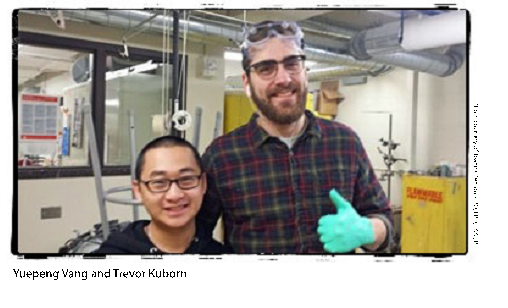A Bright Future—Technicians Needed
By Joanna Kenton, CPO, LPO, FAAOP
On Aug. 21, 2017, the day of the “great American solar eclipse,” I began my career as a prosthetic technician instructor. While America was out sporting their eclipse glasses, I welcomed an excited emerging group of new students to prosthetic fabrication.
During the initial weeks, students studied safety in the prosthetic lab and their role as a technician and began learning the basic skills pivotal to fabrication. The pounding and sawing of metal reverberated through the air as students learned how to cut aluminum uprights and finish copper rivets. Smells of freshly ground plywood greeted our nostrils as they learned how to hold their sanding paddle project to the drum sander. Patience and test of character intensified as students learned how to sew on both the industrial flatbed and patcher sewing machines; broken needles and “bird nests” were a common sight. Students learned how to fill a negative cast with plaster, smooth out a positive model, and laminate a prosthetic socket. Several “cheesy,” but proud, “first lamination” photos were taken.
From there we continued to work on bench alignment, alignment transfer, and final lamination. Suddenly, from out of nowhere, I began to notice something magical. A leg appeared! Then another … and yet … another! A few weeks prior, they hadn’t even had the fundamental skills to mix plaster! A sense of pride took root inside of me from their early-on accomplishments.
Our students come a long way during their first semester and continue to do so once employed. So why hire an O&P technician graduate versus someone without the specialized diploma
or certificate?
Because …
- O&P technician graduates have “skin in the game”—they have invested time and money in their career.
- They have already made several costly errors in class and have learned from them.
- They are in the mindset to take direction and correction when advised—grades depend on it.
- They are excited and passionate for their career—enthusiasm is contagious.
- They are prepared to sit for the technician exam administered by the American Board for Certification in Orthotics, Prosthetics, and Pedorthics (ABC). With future reimbursements at risk, payors at some point may demand central fabrication accreditation or technician certification for the fabrication of custom devices. From a quality and safety standpoint, this makes sense. ABC now offers Central Fabrication Accreditation. Certified technicians will be in demand should this come to fruition.
I am happy to report that all of my technician students who started that day, the day of the great American eclipse, are gainfully employed and working as technicians. How many technician students were in my initial cohort? Three. The remainder of my students chose the clinical pathway. While both pathways are critical to the future of our profession, concerns rest heavily on the need for continued outreach to solicit interest for the orthotic and prosthetic technician programs.
We have only six accredited technician programs in the country—that’s it! Couple this with an aging technician demographic, and we are in need of highly skilled, trained technicians. We are a device-driven profession. Without a device, there is no O&P. Fabrication is the lifeblood of our profession. Therefore, technician education is valuable and should be encouraged within our community.
Unsurprisingly, the orthotic and prosthetic profession is not mainstream. With amputation and the demand for orthoses on the rise, we need to spread the word that these programs and our profession exist. How can we as professionals promote the O&P technician programs? We can do the following:
- Encourage employers to offer attractive and competitive wages for technicians.
- Spread the word:
- Get involved at middle school and high school career days.
- Speak at Girl Scout, Boy Scout, and STEM club meetings.
- Use media as a conversation starter. For example, Dwayne Johnson hanging by a prosthesis off of a skyscraper in the 2018 film Skyscraper, or Chrissy Teigen’s December 3 Instagram showing her son wearing a cranial remolding orthosis, are great examples of devices derived from our profession and viewed by mainstream audiences. Whether realistic or not, our devices are seen and may be used in conversation.
- Engage our professional organizations. Additional local and national efforts are needed.
- Embed outreach in our curriculum.
- Incorporate additive manufacturing, maintenance, and repair in our training and curriculum.
- Collaborate with local FabLab or Makerspace locations to spread the word about O&P technician careers.
Together we can build our next generation of technicians. From the traditional methods of fabrication to the modernized advances of additive manufacturing, our technicians are indeed valuable. A good technician is indispensable and a worthwhile member of the team; a high-fab skill set saves not only time during the fit of the device but also money. Education and continued education on the part of the technician is to be commended.
To those who take the time to train new technicians: Thank you! You are the “Mr. Miyagi” to our “Daniel-san.” Your legacy moves forward.
Please spread the word about orthotic and prosthetic technician careers, the value of technician education, and certification. Truly, theirs is a bright future!
Joanna Kenton, CPO, LPO, FAAOP, is a member of the prosthetic faculty at Century College in White Bear Lake, Minnesota.


